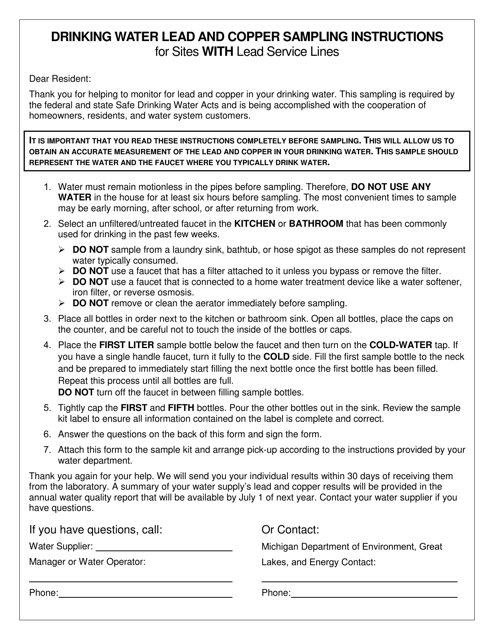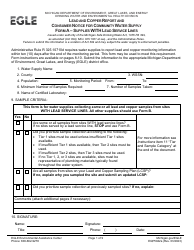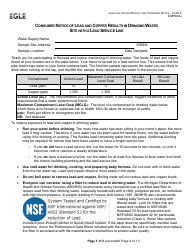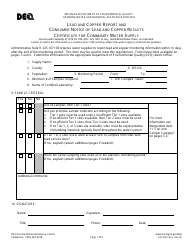Drinking Water Lead and Copper Sampling Instructions for Sites With Lead Service Lines - Michigan
Drinking Water Lead and Copper Sampling Instructions for Sites With Lead Service Lines is a legal document that was released by the Michigan Department of Environment, Great Lakes, and Energy - a government authority operating within Michigan.
FAQ
Q: What are the sampling instructions for sites with lead service lines in Michigan?
A: Sampling instructions for sites with lead service lines in Michigan focus on testing for lead and copper content in drinking water.
Q: Why is sampling important for sites with lead service lines?
A: Sampling is important to assess the level of lead and copper in drinking water and ensure compliance with health regulations.
Q: What are the risks associated with lead and copper in drinking water?
A: Exposure to high levels of lead and copper in drinking water can have adverse health effects, especially for pregnant women and young children.
Q: How often should sampling be conducted for sites with lead service lines?
A: Sampling should be conducted at least once every three years at sites with lead service lines in Michigan.
Q: What should residents do if the sampling results show high levels of lead and copper?
A: If the sampling results show high levels of lead and copper, residents should take appropriate measures like using water filters or contacting the local water utility for further guidance.
Form Details:
- The latest edition currently provided by the Michigan Department of Environment, Great Lakes, and Energy;
- Ready to use and print;
- Easy to customize;
- Compatible with most PDF-viewing applications;
- Fill out the form in our online filing application.
Download a printable version of the form by clicking the link below or browse more documents and templates provided by the Michigan Department of Environment, Great Lakes, and Energy.








